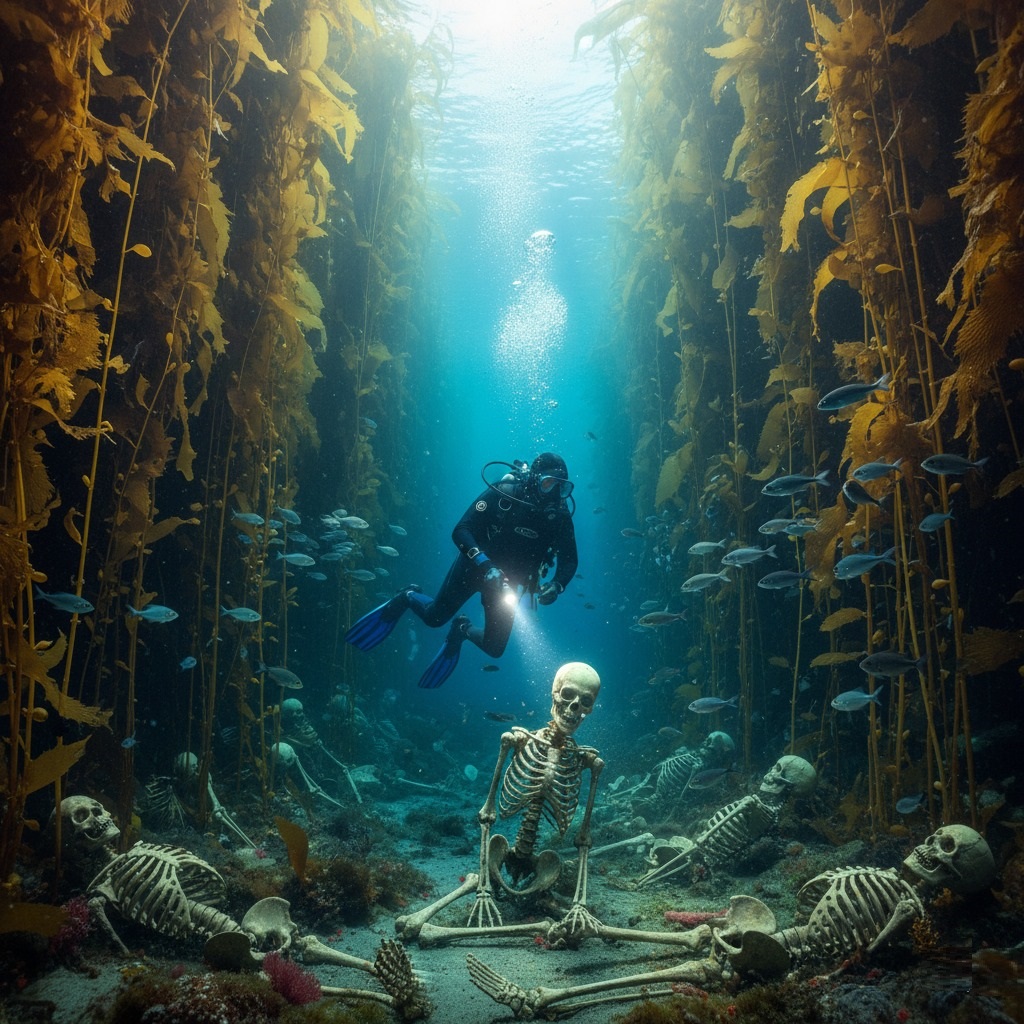The Sunken Graveyard of the Bermuda Triangle: A Diver’s Discovery

Dr. Aris Thorne, a marine archaeologist known for his unconventional theories and unyielding persistence, adjusted his rebreather. Below him, the inky abyss of the Bermuda Triangle beckoned, a place where legend intertwined with unsettling disappearances. His current expedition, funded by an anonymous benefactor, aimed to explore a newly discovered trench, previously undetected by sonar, in the heart of the infamous zone.
“Depth at 500 meters, Aris,” came the calm voice of his lead technician, Lena Petrova, through his comms. “Thermal readings stable. Pressure holding.”
“Copy that, Lena. Proceeding with descent.”
As Aris plunged deeper, the pale blue of the surface gave way to an ethereal twilight. His powerful dive lights cut through the gloom, revealing the majestic, swaying forms of giant kelp, growing to an astonishing height, creating natural submarine canyons. It was within one of these colossal kelp forests that he found it.
The trench floor wasn’t barren as he expected. Instead, it was a tableau of bleached white. Human skeletons. Dozens of them, perhaps hundreds, lay scattered amidst the sand and sessile organisms, some remarkably preserved, others mere collections of bones. There were no signs of shipwrecks, no airplane debris – just the silent, stark remains.
Aris swam closer, his heart thumping a frantic rhythm against his ribs. These weren’t recent. The bones were encrusted with centuries of marine growth, some fused with coral formations. This wasn’t a modern tragedy; this was an ancient graveyard. His archaeological instincts, honed over decades of excavating forgotten civilizations, screamed for answers.
He carefully examined one skull, its empty eye sockets staring into the perpetual darkness. The bone structure suggested these were not all of a single ethnicity or era. It was a macabre collection, perhaps a testament to millennia of lost souls consumed by the Triangle’s enigmatic grip. What force could have gathered so many, over such a vast span of time, and laid them to rest in this silent, kelp-shrouded trench without a trace of the vessels that brought them there?
The discovery immediately contradicted every known theory about the Bermuda Triangle. This wasn’t about modern technology malfunctioning or rogue waves. This was something far older, far more profound. As Aris collected samples, his mind raced with possibilities: a powerful underwater current acting as a natural trap? An ancient, unknown civilization’s burial ground? Or perhaps, something far more unsettling, something that transcended human understanding, a silent witness to countless disappearances throughout history.
“Lena,” he finally spoke, his voice hushed, “You’re not going to believe what I’ve found down here. The legends… they might just be telling half the story.”
The Sunken Graveyard of the Bermuda Triangle wasn’t just a discovery; it was a chilling portal to the past, forcing humanity to re-evaluate everything it thought it knew about one of the world’s most enduring mysteries. And for Dr. Thorne, it was just the beginning of a quest that would redefine marine archaeology, challenging the very fabric of history and myth.
